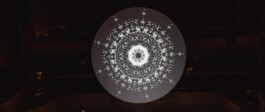
Inspired by the cosmic compositions and contemplations of medieval polymath Hildegard von Bingen, Electric Fields offers an immersive multimedia concert experience, where otherworldly music is framed by live video, lighting projections that respond to the artists, and electronic effects.
Hildegard had visions throughout her life that led to writings on celestial systems and theories of infinite connection. Channeling that spirit, Electric Fields reaches through centuries and collapses time, connecting the music Hildegard wrote in the 12th century to Baroque-era compositions of Barbara Strozzi and Francesca Caccini—all reimagined through the modern eyes and ears of David Chalmin and Bryce Dessner. The result explores the most elusive aspects of human experience: Darkness and light. Connection and isolation. The finite and infinite.
The definition-defying project was designed and directed by Netia Jones and Lightmap for the World premiere in Los Angeles Disney Hall
“Music is the language of God, only the Devil would seek to forbid it.”
—Hildegard von Bingen
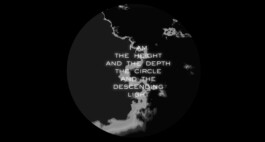
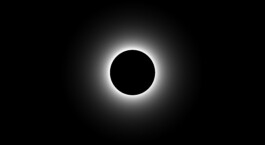
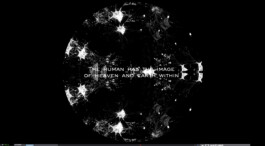
"I am the supreme and fiery force who sets all living sparks alight and breathes forth no mortal things, but judges them as they are. Circling above the circumscribing circle with my superior wings, which is to say circling with wisdom, I have ordered the cosmos rightly. But I am also the fiery life of divine essence: I blaze above the beauty of the fields, I shine in the waters, I burn in the sun and the moon and the stars. And with the airy wind I quicken all things to life, as with an invisible life that sustains them all. For the air lives in viriditas and in the flowers, and the waters flow as if alive, and the sun lives within its own light, and when the moon has waned it is rekindled by the light of the sun and thereby lives anew, and the stars shine forth in their own light as though alive."
—Hildegard von Bingen
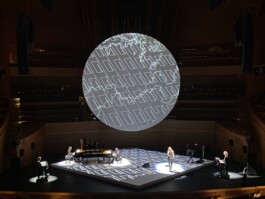
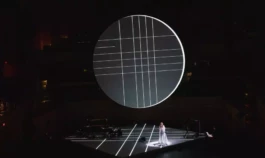
"Here is the essence of the art of composing: the ability to conceive music in architectural terms, as a shaping of sound through time. The most stunning thing about Hildegard’s creations is how they demarcate structure through a single melodic line. (Bach accomplished the same feat in his pieces for solo cello and solo violin, but he had the advantage of four strings.) This past fall, the Los Angeles Philharmonic presented a multi-composer event titled “Electric Fields,” during which the soprano Barbara Hannigan gave semi-operatic renditions of two Hildegard chants—“O vis aeternitatis” and “O virga mediatrix.” I’d heard Hildegard sung in church spaces, but it was a new thrill to encounter her in an auditorium built for Beethoven and Mahler. I thought of the latter’s comment about his Eighth Symphony: “Imagine the entire universe beginning to ring and resound.” With Hildegard, we hear the cosmos singing in one voice."
The NewYorker Magazine
—Alex Ross
“Electric Fields is a fascinating journey of outward and inward reflections.”
San Francisco Classical Voice
—Jim Farber

BUDAPEST, HU
April 10, 2024
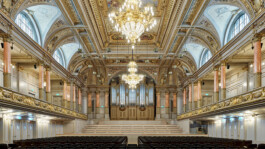
ZURICH, CH
Tonhalle
April 13, 2024, 18:30
April 14, 2024, 17:00
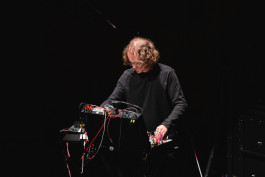
INTERVIEW with DAVID CHALMIN
ELB PHILHARMONIE HAMBURG
What can the audience expect from the project »Electric Fields«?
Surprises
How did the idea for this project come about?
A few years back, we recorded some improvisations with Barbara Hannigan and bassist Massimo Pupillo. We had such a good time that the idea of creating a project “sur mesure” for Barbara, Katia and Marielle emerged. We then asked Bryce Dessner to join as we thought it would be a great balance to mix his music and mine for such amazing performers.
What was the collaboration with Bryce Dessner like? And how did the collaboration with Barbara Hannigan and Katia and Marielle Labèque come together?
Bryce and I work together on a wide variety of projects (compositions, productions, movie scores, etc…). One of our main collaboration of this past few years is the Dream House Quartet together with Katia and Marielle Labèque, where we compose and perform contemporary music for two pianos, two guitars and electronics. So we almost have a “band” approach when we get together, we share ideas, play demos to one another and freely express feedback to improve our work. It’s very inspiring for me to study his scores and listen to his music for he’s such an accomplished composer. I’m more of an experimental producer/musician and our musics are quite different but they also share a similar backbone I would say. For Electric Fields, a big part of the creative process started in the studio, where we did a lot of improvised sessions (with Katia, Marielle and Barbara) that we recorded and it gave us a lot of material to start creating.
The project includes compositions by Hildegard von Bingen, Barbara Strozzi, and Francesca Caccini. Why did you choose those composers?
Hildegard Von Bingen was the first and main inspiration for this project because of her music, obviously, but also because of the amazing character she was. She actually was at the center of our creative process. Her visions, her spirituality, her paintings and her connection to nature all felt very inspiring. Her music is also very contemporary in a way and it leaves a lot of space to create new musical landscapes using some of the melodies and words. Her music was our starting point but we moved quite freely around it to create our very own musical environment.
After some time, while brainstorming with Barbara, Katia, Marielle and Bryce the idea of integrating other composers emerged and we felt that, in very different eras of time, Strozzi and Caccini shared the same strength and focus as Von Bigen, so we decided to use there music too.
Beetween pieces by von Bingen, Strozzi, and Caccini works by Dessner, Hannigan, and yourself will be heard. What is the idea behind this sequence of earlier and newer music? How are works from different centuries with different soundscapes held together? And is there a difference in how you perceive and approach those works?
Electric Fields is not a recital at all. The music is imagined as a journey lead by three amazing performers. The composers are the thread to carry their performance on stage. We arranged earlier music in a very free way, sometimes grabbing a melody, or just some words in order to tell our story. Caccini might sound like an electronic track and Barbara Hannigan’s music may sound like an ancient chant recorded in the future! There is no chronology or desire to faithfully re-interpret specific pieces, it’s just an organic musical trip composed of material by all of us.
You manipulate the sounds live electronically. How exactly do you proceed?
I use modular synths (which in my case look like two big boxes filled with cables and little lights!) to generate and process sound. I get sound from both pianos and the vocals through microphones so I can manipulate them in various ways. A lot has to do with space and time (delays and reverb) but also granular synthesis which is a technique that grabs very small samples of a sound to create new tones. In addition to that there are some synth sounds that are used as an extension of the actual instruments.
How important is the space in which such a wide ranged soundscape unfolds live? What is interesting about this project being performed at Elbphilharmonie?
The sound in that project is very important and as we use electronics, it cannot be purely acoustic. We want the sound to cuddle the audience, they have to be surrounded by it, immersed in our musical world during the time of the performance. It is a mix of acoustic and amplified element, but luckily, we have a very good sound engineer, Guillaume Loubère, who travels with us and deals with our sound.
The Elbphilharmonie is an ideal place for this performance because the audience feels close to the stage but at the same time, the space is huge so you can have a very big and natural sound. It’s also special for us, because we’ve always had the best audience and the best concerts at Elbphilharmonie!
"I saw a great mountain the color of iron and enthroned on it One of such great glory that it blinded my sight. On each side of him there extended a soft shadow, like a wing of wondrous breadth and length. Before him at the foot of the mountain stood an image full of eyes on all sides in which because of those eyes I could discern no human form. In front of this image stood another, a child wearing a tunic of subdued color but white shoes upon whose head such glory descended from the One enthroned upon that mountain that I could not look at its face."
—Hildegard von Bingen
"And behold! In the forty-third year of my earthly course, as I was gazing with great fear and trembling attention at a heavenly vision, I saw a great splendor in which resounded a voice from Heaven, saying to me, ‘O fragile human, ashes of ashes, and filth of filth! Say and write what you see and hear. But, since you are timid in speaking, and simple in expounding, and untaught in writing, speak and write these things not by a human mouth . . . but as you see and hear them on high in the heavenly places in the wonders of God."
—Hildegard von Bingen
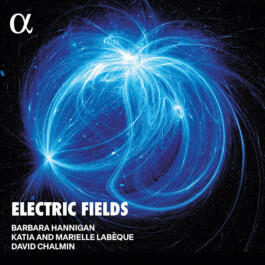
The Times: The best classical albums of 2025 so far
the ambient, the minimalistic, the sacred and secular…..Is there beauty in all this? Certainly, particularly when Hannigan’s fluid voice spirals high above Katia and Marielle Labèque’s patterned capers or the interesting textures generated from synthesisers, laptop, and a jungle of wiring by the French composer and musician David Chalmin. Excitement? Some of that too in the gutsier stretches of the new pieces by Bryce Dessner. . ….. A gift from God? Or the work of the devil?
- Geoff Brown
TRACKLIST
1. O virga mediatrix (Arr. for Soprano, Pianos and Electronic by David Chalmin) 7:46
2. Research #1 (David Chalmin, Katia Labèque e Marielle Labèque) 3:41
3. Che t'ho fatt'io? 4:46
4. O orzchis Ecclesia 6:32
5. Lingua ignota 5:49
6. Che si può fare?, Pt. 1 8:51
7. Che si può fare?, Pt. 2 (Arr. for Soprano, Pianos and Electronic by David Chalmin) 5:06
8. O nobilissima viriditas 7:40
9. O vis aeternitatis (Arr. for Soprano, Pianos and Electronic by David Chalmin)
Out on May 9 2025
Le Disque classique du jour: un cosmos sonore intense et unique.
—RADIO FRANCE
In total, there’s more than an hour of extremely varied and accomplished music-making on this disc, recorded in 2022-23 at La Fabrique des Ondes in Saint-Pée-sur-Nivelle. Obviously the engineering is integral to the end results, and there’s some fascinating stuff going on
—MYSCENA.ORG
...like a fever dream ...mesmerizing, melismatic….subtle, droning electronics.… larger dreamscape.both ethereal and sensual , this performance would make a fitting soundtrack for that unknowable journey.
—Tom Huizenga GEORGIA PUBLIC BROADCASTING, NPR
un pont entre quelques grandes musiciennes des temps jadis, et celles d’aujourd’hui, avec la complicité du compositeur américain Bryce Dessner, dans une mise en son électronique de David Chalmin aux synthétiseurs. …..profondément original …...un large souffle incluant improvisation et post-minimalisme pour un voyage très spécial à travers confluences et convergences.
—François Hudry/Qobuz
Une expérience vocale et pianistique autour de champs magnétiques…
Voici un album à la fois fascinant et envoûtant, qui ne manque pas d’originalité. L’idée est née dès 2015, a fait son chemin entre les divers interprètes en vue d’un spectacle pluridisciplinaire immersif, et a été créée en 2021 avec des images vidéo live de l’Anglaise Netia Jones, metteuse en scène et scénographe qui dirige un atelier multimédia de renommée internationale.
—Jean Lacroix/Crescendo Magazine June 2025
CLASSIC 107'S ALBUM OF THE MONTH: "Electric Fields"
With days stretching out longer and longer in June, Classic 107’s Album of the Month stretches across days, years, and centuries to connect the present to the medieval.
Electric Fields is the latest offering from Canadian soprano and conductor Barbara Hannigan. A recent recipient of the prestigious Polar Music Prize alongside iconic musicians Herbie Hancock and Queen, Hannigan joins forces with sister piano duo Katia and Marielle Labèque and electronic artist and arranger David Chalmin to shine new light on the works of Hildegard von Bingen, Francesca Caccini and Barbara Strozzi.
The project was born out of a collaboration that Hannigan and the Labèque sisters performed back in 2022 with the Los Angeles Philharmonic. According to Chalmin, "We had such a good time that the idea of creating a project 'sur mesure' for Barbara, Katia and Marielle emerged."
Von Bingen takes a special place in this album, which shimmers with the possibility of connection to the cosmos. This was something that the medieval polymath wrote extensively about in her life, and that gossamer connection is made manifest by the radiating electronics that enhance music from over seven centuries ago. Chalmin is aided in this electronic endeavor by Bryce Dessner of the acclaimed indie rock outfit The National and frequent arranger for Taylor Swift.
The spiritual and mystical nature of Von Bingen’s music is blended with love songs in the vernacular by Caccini and Strozzi, which Hannigan uses as a jumping off point for improvisations and experiments. The combinations of the divine and the human, past and present, acoustic and electric make this a record of ethereal connection and otherworldly experience.
—Nolan Kehler/Classic 107
Bryce Dessner, David Chalmin: Electric Fields
Performance ****
Sonics ****½
The plans for this recording began with the Labèque sisters….. Together with Chalmin's space-age electronics, these are as much from another time as they are out of this world.I was quite taken by the two-part reframing of Strozzi's "Che Si Può Fare?" . It begins with an almost nine-minute improvisation by Hannigan, Katia Labèque, and Chalmin with multiple loops and overdubs. There's a lot to savor, including a section that borders on madwoman melodramatics. The second half, Chalmin's arrangement of the Strozzi composition, gives the Labèque sisters ample opportunities to shine.
—Jason Victor Serinus. May 2025 Classical Record Reviews | Stereophile.com
Cuando en un solo disco se unen uno de los sellos más imaginativos del panorama fonográfico actual con cuatro músicos que han hecho de la continua reinvención de sus lenguajes una de sus señas de identidad, no se puede más que esperar una propuesta que se desembaraza de cualquier tópico interpretativo al uso, como la que nos propone Electric Fields, título de este compacto del sello Alpha en el que se pone en diálogo la música de nuestro tiempo con la del pasado, prescindiendo de todo asomo de historicismo.
—Paco Yanez/Scherzo (es)
ITALIANO: “Le parti pianistiche, eseguite dalle sorelle Katia e Marielle Labèque, sono in effetti quelle più originali e forse meglio riuscite.”
ENGLISH: “The piano parts, performed by sisters Katia and Marielle Labèque, are in fact the most original and arguably the most successful.”
—Stefano Dalfovo. July 2025, MUSIC PAPER - IT
SPANISH: "Barbara Hannigan hace de la música de Hildegard un monumento a la belleza, una declaración de amor, acompañada por los increíbles sonidos electrónicos de David Chalmin y los dos pianos celestiales activados por las hermanas Labeque. (...) El disco Electric Fields tiene todo para satisfacer por igual al experto que a todo aquel que gusta del hallazgo, la novedad, lo diferente. Lo bello."
ENGLISH: "Barbara Hannigan turns Hildegard’s music into a monument of beauty, a declaration of love, accompanied by the incredible electronic sounds of David Chalmin and the two celestial pianos played by the Labèque sisters. (...) The album Electric Fields has everything to satisfy both the expert and anyone who delights in discovery, novelty, and difference. In short, beauty."”
—Pablo Espinosa. July 2025, LA JORNADA - MX
“For the penultimate piece, Bryce Dessner returns with another tribute to Hildegard, O nobilissima viriditas, where the undulating piano playing before swelling the waves of sound and giving them impressive lyrical and dramatic power. Very, very strong.”
—Frédéric Cardin. July 2025, PAN M360 - CA
SPANISH: "Las Labèque, maestras en el arte de la insinuación pianística, dan forma al flujo sonoro con una delicadeza nunca superficial. Y Chalmin, como tejedor de atmósferas, aporta el vínculo invisible entre lo acústico y lo electrónico, entre lo arcaico y lo futurible. En su conjunto, Electric Fields es tanto un homenaje a la creatividad femenina de siglos como una reivindicación de la música como campo abierto de experimentación. Un regreso al futuro."
ENGLISH: "The Labèques, masters of the art of pianistic insinuation, shape the sonic flow with a delicacy that is never superficial. And Chalmin, as a weaver of atmospheres, provides the invisible link between the acoustic and the electronic, between the archaic and the futuristic. As a whole, Electric Fields is both a tribute to centuries of female creativity and a vindication of music as an open field for experimentation. A return to the future."
—Pablo J. Vayón. July 2025, LA DIARIO DE SEVILLA - ES
Electric fields : chant magnétique
“La singularité d’Electric Fields tient à son insaisissable centre de gravité : la lumière. Elle traverse chaque pièce, comme une petite veilleuse intérieure et fragile ou à l’inverse, une gerbe éclatante et extatique. Le prisme électronique, réalisé en temps réel par David Chalmin, les transpose et les expose dans une autre temporalité, fluide, vaporeuse et mouvante, où le souffle ancien respire avec celui du présent.”
—Florence Lethurgez - 25 septembre 2025 - CLASSYKEO
"It's fascinating! (...) It's beautiful in a rather conventional way. (...) Recommended for Hannigan fans and those with a taste for the experimental."
— MyScena EN (CA)
"Fascinant ! (...) Très beau, d'une manière plutôt classique. (...) Recommandé aux admirateurs de Hannigan et à ceux qui ont un penchant pour l'expérimental."
— MyScena FR (CA)
"phenomenal album" - "Those seeking adventure can expect a fascinating journey through a new landscape."
— Opus Klassiek (NL)
"Is there beauty in all this? Certainly, particularly when Hannigan's fluid voice spirals high above Katia and Marielle Labèque's patterned capers or the interesting textures generated from synthesisers, laptop, and a jungle of wiring by the French composer and musician David Chalmin. Excitement? Some of that too in the gutsier stretches of the new pieces by Bryce Dessner."
— The Times (UK)
"L'esprit d'Hildegard von Bingen – la 'Sybille du Rhin', la mystique, la savante, la sachante – plane sur l'ensemble, apparemment très à l'aise dans cette configuration, où chaque création ou recréation s'impose par sa virtuosité raffinée, sa complexité, son inventivité. De quoi s'accommoder du vibrato sporadique de la soprano, par ailleurs irrésistible d'engagement et d'intelligence."
— La Libre Belgique (BE)
Envoûtant et inclassable : avec "Electric Fields", Katia et Marielle Labèque, Barbara Hannigan et David Chalmin mélangent spiritualité et son de manière audacieuse.
— Qobuz (FR / DE / WW)
"The Boundless Artistry of Barbara Hannigan: Star soprano and conductor Barbara Hannigan reflects on winning the 2025 Polar Music Prize, her musical heroes and the power of collaboration." (by Chloe Weiss)
— IDAGIO (DE / WW)
Along with her musical partners – veteran pianists Katia and Marielle Labèque and electronics wiz and composer David Chalmin – Hannigan has fallen under the spell of the 12th century German abbess Hildegard von Bingen. The result, Electric Fields, is an album that unfolds like a fever dream...both ethereal and sensual thanks to the creative arrangements and the miracle that is Hannigan's voice. Even when obscured by audio treatments and intellectual concepts, it's still recognizable for its signature beauty – a pure, bright, gleaming instrument, offering emotional intensity with refined phrasing and long-breathed lines. When they talk about seeing that great white light somewhere between life and death, this performance would make a fitting soundtrack for that unknowable journey. It ends, literally, on a high note: A 19-second-long, luscious and soaring high C, the likes of which only Hannigan can deliver.
— NPR (Tom Huizenga) (US)
"It's absolutely stunning. It is cutting edge yet also meditative. There are moments it is frankly trippy, it is a dreamworld that is made for us. It is kind of experiential music but that doesn't really detract from the fact that it's also very high quality. They all take risks with fantastic techniques and effects; it's a very polished performance. And so, although it has a sort of trippy meditative overall feel, when you lose yourself to the music it really is a fantastic disc overall."
— BBC Radio 3 'Record Review' (UK)
Fluid sound fields bubble and tremble here, become louder, more concrete, disappear and then fade away.Mystical texts by Hildegard von Bingen, also in her secret language lingua ignota, song fragments by the early baroque composers Barbara Strozzi and Francesca Caccini and pieces by the contemporary composer Bryce Dessner are used as models. These are now all mixed into highly nervous, then meditative, meandering sound collages. These ambient, often improvised, modern arrangements transcend centuries and bring together contemporary vocal music.
— Rondo (DE)
"The result will sound familiar to lovers of medieval, Renaissance, and baroque harmonies as well as to aficionados of New Age ambience. Hannigan, who is known for championing the music of Berg and Messiaen, miraculously transforms her instrument into one appropriate for medieval plainchant. (...) There's a lot to savor, including a section that borders on madwoman melodramatics. The second half, Chalmin's arrangement of the Strozzi composition, gives the Labèque sisters ample opportunities to shine."
— Stereophile (US)
Aus gemeinsamen experimentellen Jam-Sessions ist das aktuelle Album von Barbara Hannigan entstanden: „Electric Fields" heißt es und vereint mittelalterliche Musik mit Einflüssen aus zeitgenössischer Elektronik. Um Werke und Texte von Hildegard von Bingen ranken sich Improvisationen und zeitgenössische Kompositionen. Hannah Schmidt hat einfach nur Spaß dabei!
— SWR Kultur, Treffpunkt Klassik (DE)
"Auf diesem Album passiert so viel auf so vielen unterschiedlichen Ebenen, dass man bei jedem Durchlauf neue Feinheiten und Sounds wahrnehmen kann. Hannigan, Chalmin und Katia und Marielle Lebèque wecken, ganz feinsinnig, die Ohren auf – und das zu hören macht einfach nur Spaß."
— SWR (DE)
Voor luisteraars met een open oor voor het ongewone, het sensuele en het sublieme is Electric Fields niets minder dan een openbaring.
— Klassiek Centraal (BE)
"Electric Fields is honest and unpretentious. David Chalmin's modular synthesizer creates cosmic worlds of echoes, glitches and even a stray beat. Pianists Katia and Marielle Labèque play tasteful John Adams-esque piano arrangements at times and Hannigan sings with great depth – full and passionate."
— De Volkskrant (NL)
"the Labèques are unerring as always, Chalmin distinguishes himself as a sonic colourist par excellence, and Hannigan is, as ever, a wonder to behold."
— Textura (US)
"Het is indrukwekkend hoe evident deze vernieuwing klinkt." // "It is impressive how obvious this innovation sounds."
— De Standaard (BE)
En su nuevo disco, Electric Fields, la soprano y directora canadiense Barbara Hannigan se ha juntado con el celebrado dúo de pianistas que forman las hermanas Labèque y con el compositor francés David Chalmin. El experimento consiste en interpretar temas propios y piezas de autoras del pasado como Hildegard von Bingen y Barbara Strozzi que han sido arregladas para encajar en las atmósferas electrónicas del álbum. Pero la sorpresa son un par de temas de Bryce Dessner, guitarrista de The National con una importante carrera como compositor de música clásica contemporánea, que aparecen disimuladamente en el tracklist del álbum. Este torrencial O nobilissima viriditas es suyo.
— El Periódico de España (ES)
There seem to be no barriers for these wonderful musicians. They've produced an album that will reward multiple listens and close study, but which is also just there in its particular groove, inspiring wonder.
— Several Instruments (UK)
Três mulheres Hannigan & Labèque: No "Música Contemporânea" desta semana, João Marcos Coelho destaca três grandes mulheres da música: a soprano canadense Barbara Hannigan e as irmãs pianistas Katia e Marielle Labèque. Elas se unem ao compositor David Chalmin no álbum "Electric Fields", que mistura música vocal de diferentes séculos com sons eletrônicos ao vivo. No repertório, obras de Hildegard von Bingen, Francesca Caccini, Barbara Strozzi, Bryce Dessner e Chalmin.
— Cultura FM (BR)
"All four panel members gave Electric Fields highest score, and graded it as 5/5! Happens very seldom. 'It's like a meeting between medieval music and electronics that feels very original – I love it! Hannigan sings with a natural and beautiful voice.'"
— Sveriges Radio (SE)
Barbara Hannigan is a world-renowned conductor, soprano, and performer whose work pushes the boundaries of classical and contemporary music. Known for her fearless interpretations and deeply expressive performances, Barbara has built a career that defies convention and celebrates the transformative power of sound. In this episode, Barbara and I discuss her recent album Electric Fields, which offers modern arrangements of centuries-old vocal music.
— Makers & Mystics (podcast) (WW)
"Barbara Hannigan Electric Fields _ La cantante e direttrice d'orchestra canadese è uno dei nomi fondamentali della musica d'oggi, e averla ospite sulle pagine della nostra rivista è per noi un autentico avvenimento."
— Musica Jazz Magazine (IT)
Il en va alors de l'arrangement comme du CD tout entier, qui déconcerte par ses envolées new age puis séduit par sa gestion hypermaîtrisée. - Pierre Gervasoni
— Le Monde (FR)
"Hannigan shines alongside such star power as the piano-playing heavyweights, Katia and Marielle Labèque, and the wizardry of composer/performer David Chalmin's ambient atmospheric contributions. But Hannigan's performance is flawless – again. Each work is a priceless sound-painting. Each phrase has its own tinta; each vocal section a distinctive character."
— The WholeNote (CA)